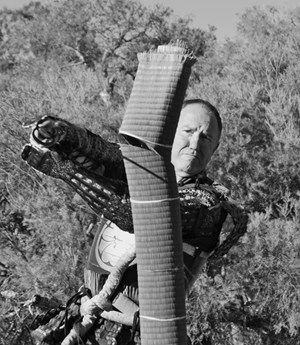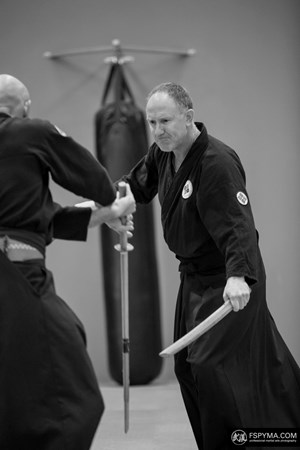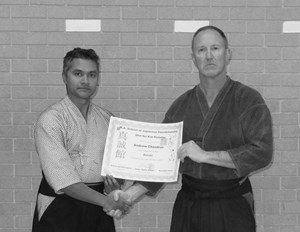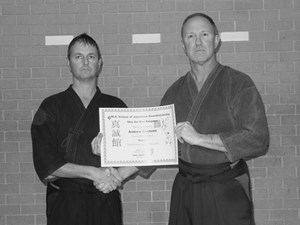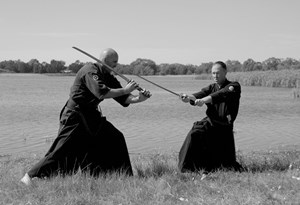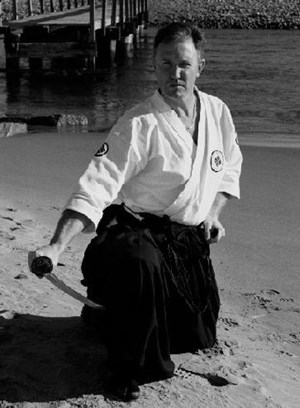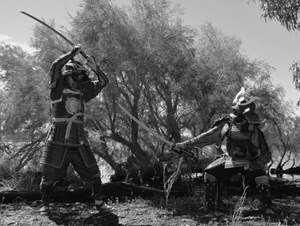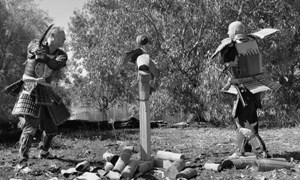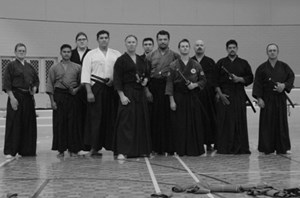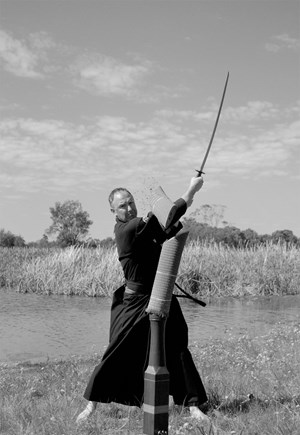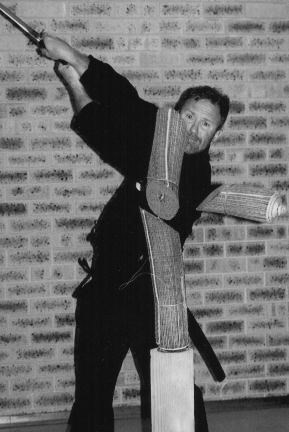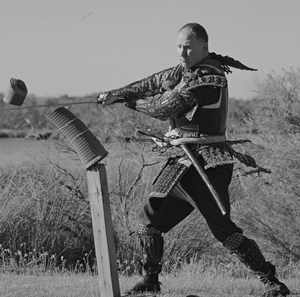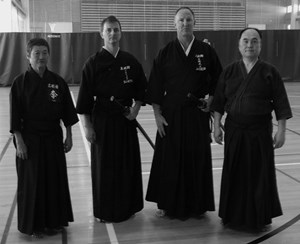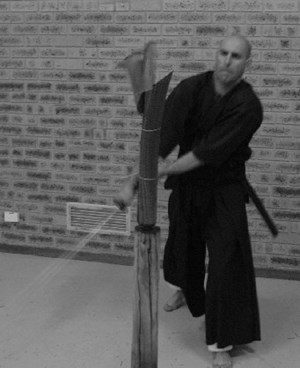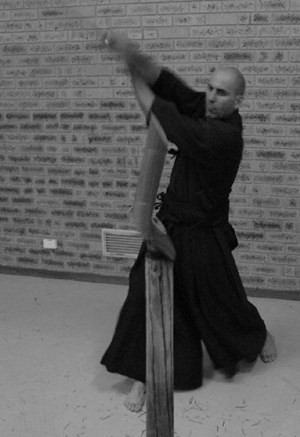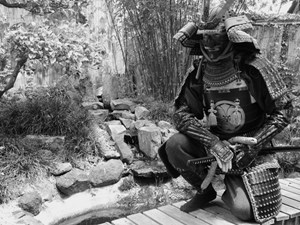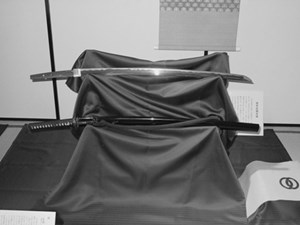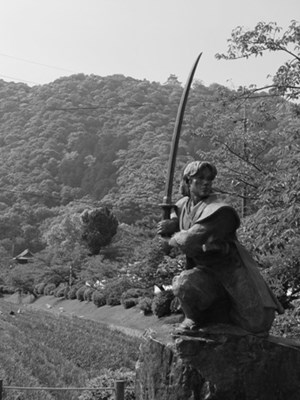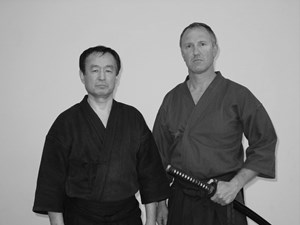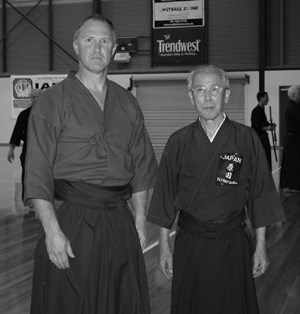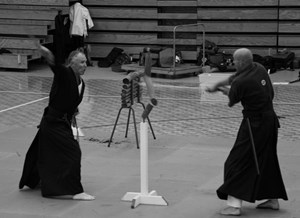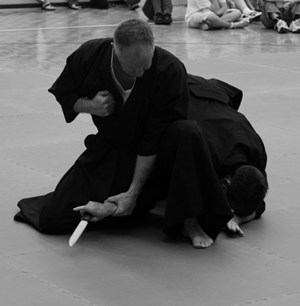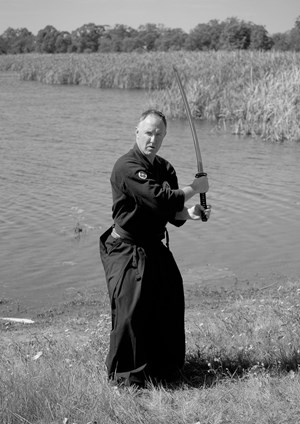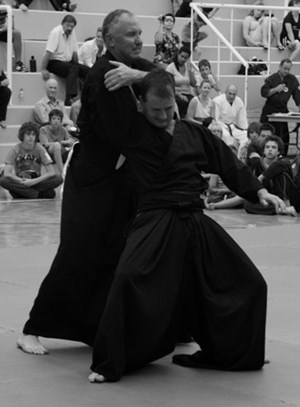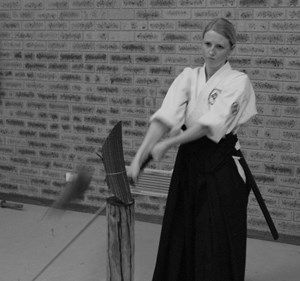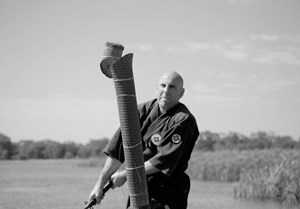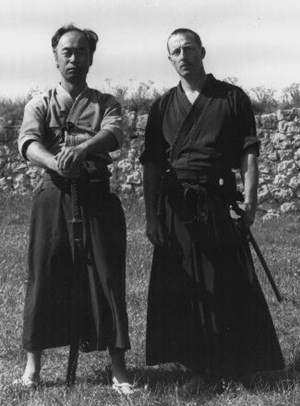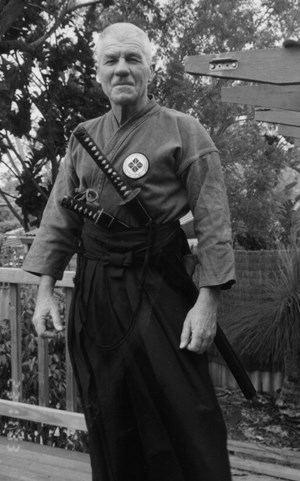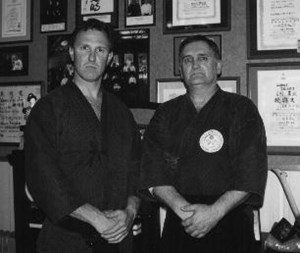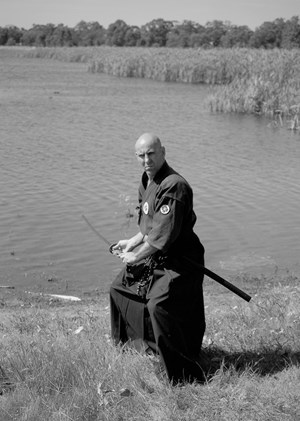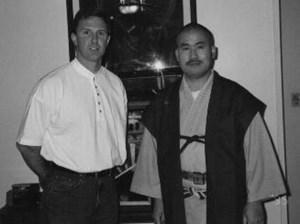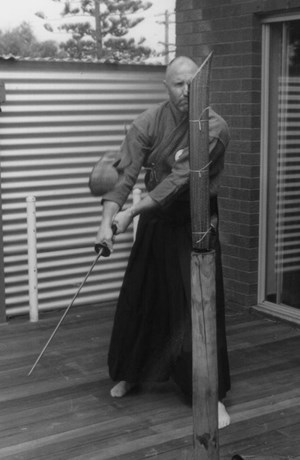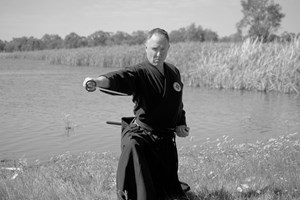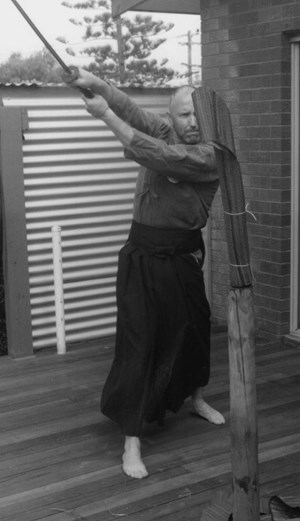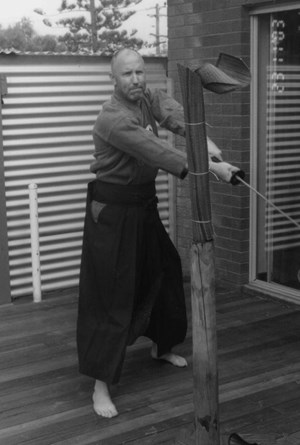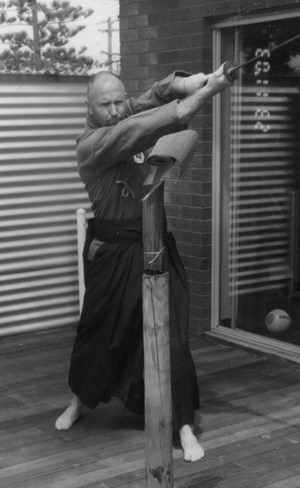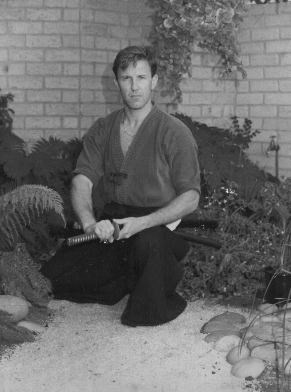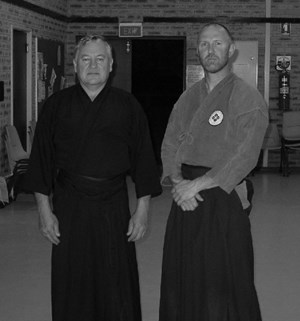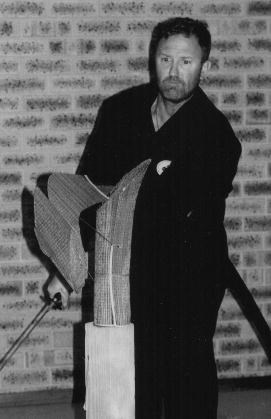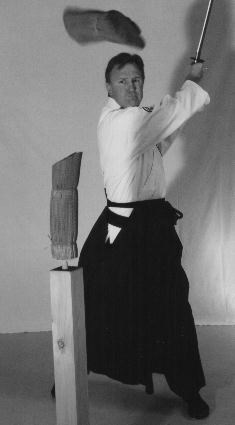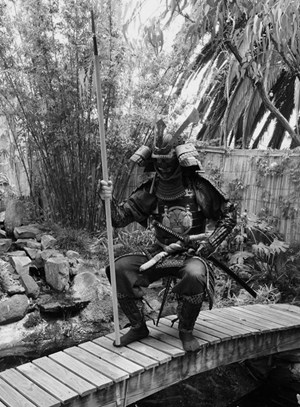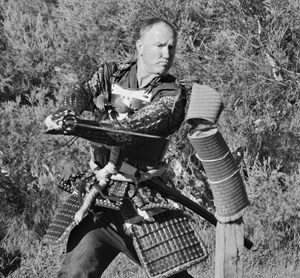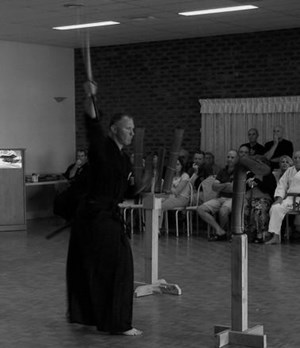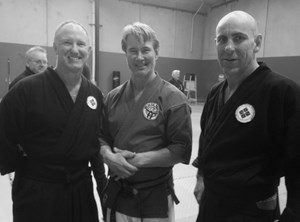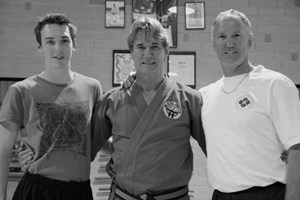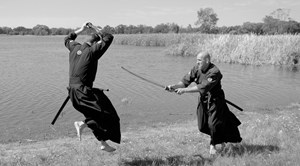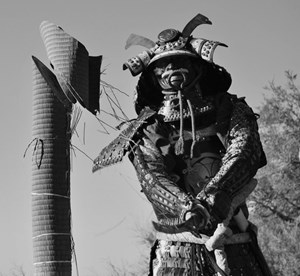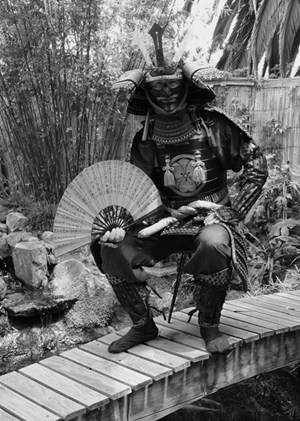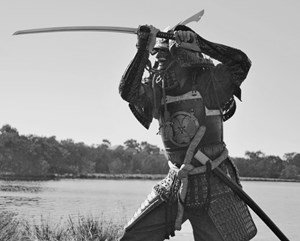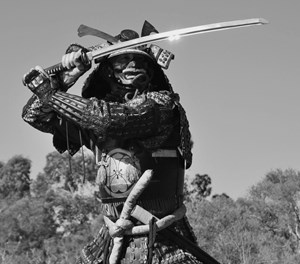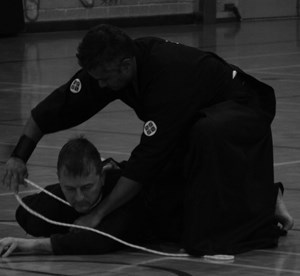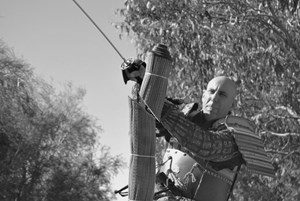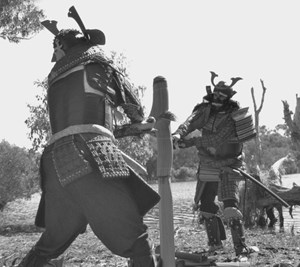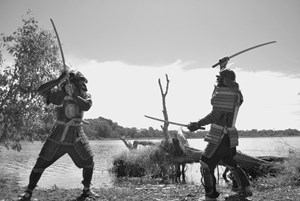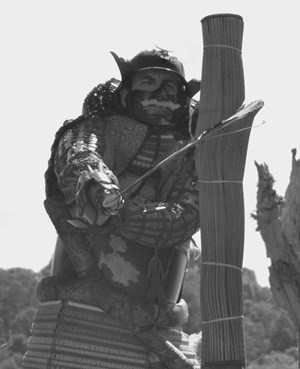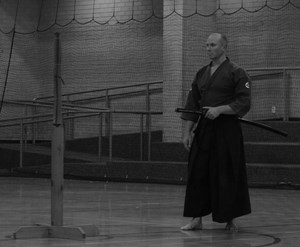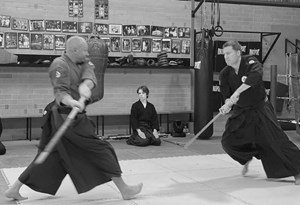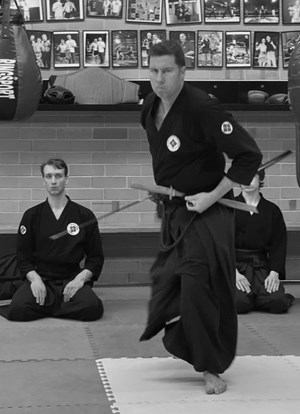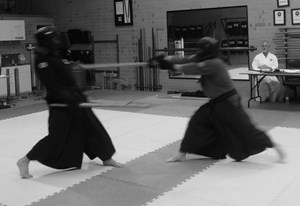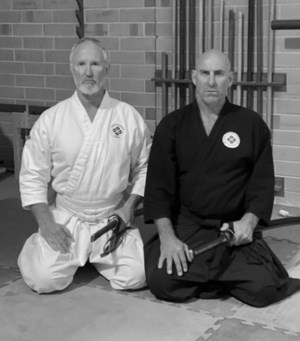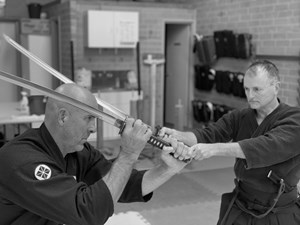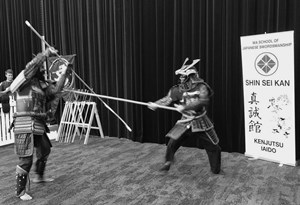Sword Etiquette
Introduction
In this article we will look at the etiquette within the sword school. The actually handling and viewing of blades will be covered later. Every sword school has its own particular etiquette. Generally within the Dojo there are three main things to remember:
You are a student seeking knowledge;
Current members of the Dojo, especially the Sensei, deserve
respect; and
Swords used in the Dojo are dangerous weapons that belong to
someone.
Traditionally there are do's and don't within every sword school,
some are common, some are not. There is also the disciplined
structure of the school and respect for the head of the school. The
Sensei demands the ultimate respect because he is offering to share
his knowledge with the student, but like all other members of the
school, he is armed with a weapon, this issue means the students
focus must be on his surroundings within the Dojo. In days of old,
the swordsman had the right to cut down those that did not show the
correct respect. This does not exist today, but the attitude this
develops in students is an essential part of the training. Be
prepared at all times, be aware of the weapons around you, and
don't let your guard down.
First Contact
It is not acceptable to turn up to a sword school without first
contacting the Sensei for permission. Most sword schools consider
their set of techniques as secret. In a life or death struggle with
another school, hidden technique can make the difference. If you
are studying another style of martial arts, it is essential that
you explain this to the school before you visit, especially if you
are studying another style of sword work. In some schools it is
considered an immediate challenge if a member of another sword
school enter the Dojo. If you choose to study at multiple schools
it is respectful to inform all your instructors of any styles
you're studying.
Once you have been invited to view the training, arrive early, but
don't expect to talk to the Sensei. It is the job of the senior
student (Sempai) to talk to visitors. Mandatory actions when
entering a school include taking off your shoes outside and bowing
to the shrine before entering. When viewing a class for the first
time, don't leave before the end of class, and show some respect
for those who speak to you, stand if they are standing and be
polite. Respect for the Sensei is essential, any perceived
disrespect to Sensei will result in immediate retribution from the
students. Discuss all membership details with the Sempai and
arrange a time to start training. If you do not like the school,
wait until the end of training, thank the Sempai, bow to the shrine
and leave. Do not have the attitude that it would be a privilege
for the Sensei to teach you, it is always the other way around.
Within the School
All schools have a short opening ceremony at the beginning of class, which involves:
- Bowing to the shrine;
- Bowing to the Sensei;
- Bowing to the sword;
- Bowing to each other; and
- A request to be taught (onegaeshimasu).
Learning to bow correctly is not only important from a disciplinary viewpoint but it also separates good and poor swordsmen. A sloppy bow looks bad and will reflect on everything you do.
Handling of the sword within the Dojo reflects Japanese culture, respect, awareness and economy of movement. The sword should never be waved around in a threatening manner at anytime except when doing specific exercises. This includes the Bokken or Bokto (wooden sword), as they are considered in the same manner as a live blade.
When in seiza, students place the weapon to the right side and slightly out of reach, making it difficult to draw quickly. The blade is always positioned with the sharp side towards your self, and away from other. Other people's blades are given the utmost respect they are not touched, stepped over or tampered with in any way.
While in class, the student must remain constantly vigilant; it is the same as attending a pistol or rifle range. Weapons are being used and students must be aware of what is happening around them at all times. This is part of good training.
When the Sensei speaks to a student, the students should stand straight and hold the weapon in a non-threatening manner. If the live blade is out, then it must be sheathed immediately and held in the right hand with edge out. If it is a bokken then it should be held in the right hand blade edge out. This is the most difficult position from which to draw the sword, and shows respect to the Sensei or other students. When the Sensei has finished talking the students should thank the Sensei, bow and then continue training.
All students should know their place in the Dojo and respect
that place. There are common courtesies that need to be observed
which include such things as:
When adjusting your uniform turn away from other students and the
shrine (nobody wants to see you get dressed);
No 'chit chat' in the Dojo; and
Don't discuss money in the Dojo.
Each Dojo will have individual rules and expectations.
While safety is the prime consideration in a sword school and strict discipline in the handling of weapons is a must; this is not the only reason for strict discipline. The discipline also reflects the nature of sword work. Studying the sword requires mental and physical effort, and this cannot be taken lightly. Good etiquette says a great deal about a student, his attitude and the school. Discipline trains the student in responsible handling of the weapon. Discipline instils a good attitude, and which develops mental strength; the skills of the swordsman come from mental strength not physical strength. Discipline is not for the benefit or ego of the Sensei, but for the training of the student looking for self-mastery.
